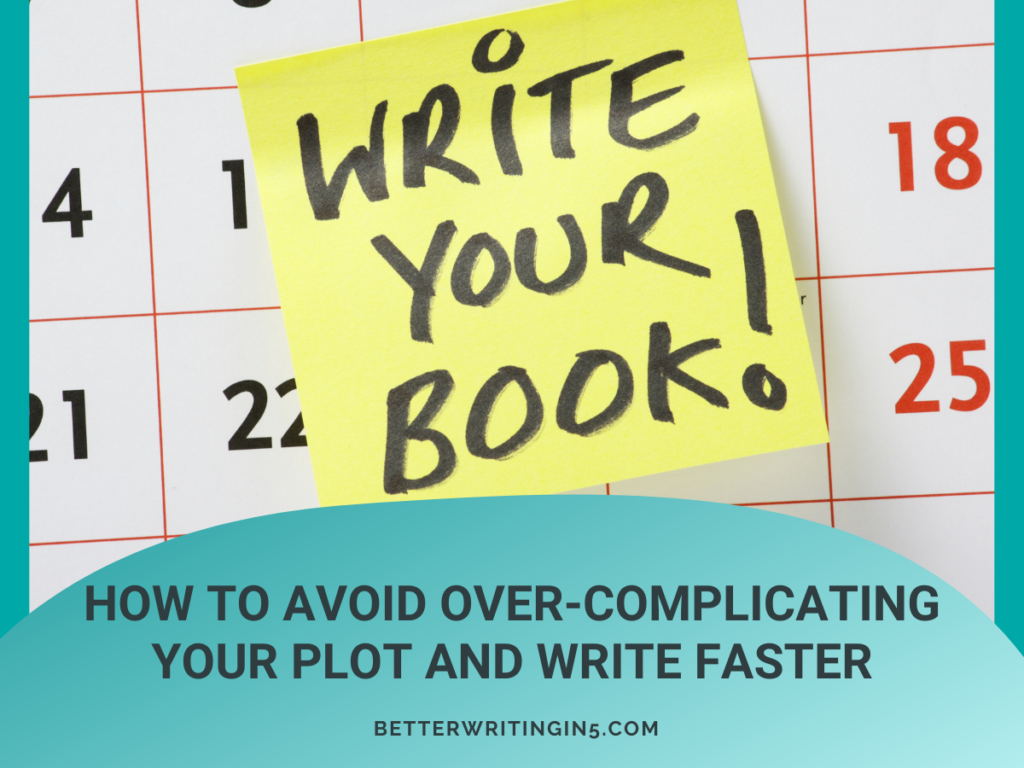Let’s face it: you’re a writer with a million ideas swirling around your head, and you’re trying to squeeze them all into one story. But here’s the catch: the more you add, the slower you write. A complicated plot can bog you down with endless twists, subplots, and world-building details. If you want to speed up your writing process, it’s time to simplify.
Here are five key strategies to help you avoid over-complicating your plot—and get to writing faster:
1. Keep it focused
The key to a fast, smooth writing process is having a central conflict. Focus on one main issue—whether internal (your character’s inner struggle) or external (a life-or-death situation). When your story centers around a single, clear conflict, you’ll spend less time trying to figure out what happens next. This doesn’t mean your character can’t deal with multiple issues, but the main focus should be clear and resolute. By honing in on one primary conflict, you can streamline your plot and keep the pacing quick. One problem, one goal, and your story will practically write itself.
2. Keep it simple
You don’t need ten subplots to make a compelling story. Cut anything that doesn’t directly support your main plot or theme. The same goes for characters—don’t overwhelm your story with a sprawling cast. Choose one or two side characters who are integral to the plot and help reveal key aspects of your protagonist. Fewer characters means fewer distractions and fewer relationships to manage. It’s easier to write, and it keeps the focus where it belongs—on your main character and their journey. If a subplot or character doesn’t directly contribute to your main storyline, let it go. The fewer elements you have, the faster your story will come together.
3. Keep it moving
Simple scenes are your best friend when it comes to speed. Don’t waste time crafting elaborate setups or filler scenes. Every scene should move the plot forward or reveal something important about your character. Think about it: unnecessary scenes are just more words you have to write (and revise). Similarly, don’t get bogged down with excessive descriptions. You don’t need to describe every nook and cranny of the room—just what’s important to the plot. Focus on what moves the story forward. And if a scene doesn’t do that? Cut it.
4. Keep it action-packed
Jump straight into the action. Don’t worry about lengthy backstory or unnecessary buildup. Starting in the middle of the story—when things are already happening—keeps the momentum high and the writing quick. You can always tweak the beginning in revisions. But in the first draft, skip the slow burn and dive into the immediate action. You’ll be surprised at how much faster the words come when you’re not bogged down in setting everything up.
5. Keep it essential
You don’t need to explain the history of every kingdom or the inner workings of your magic system. Stick to what’s necessary for your character and plot to move forward. And when it comes to “show, don’t tell,” be efficient. Don’t feel the need to explain everything. Instead, show only what’s most important. Let your descriptions serve the story, not clutter it. You’ll speed up your writing by focusing on what’s essential.
Conclusion
The more you simplify your plot, the faster you can write. Focus on a single central conflict, simplify your subplots and characters, and keep your scenes straightforward and action-packed. Start in the middle, skip unnecessary details, and limit your world-building. Writing quickly doesn’t mean sacrificing quality—it just means knowing where to focus your energy. So, next time you find yourself over-complicating things, take a step back, simplify your approach, and get writing. You’ve got this!

